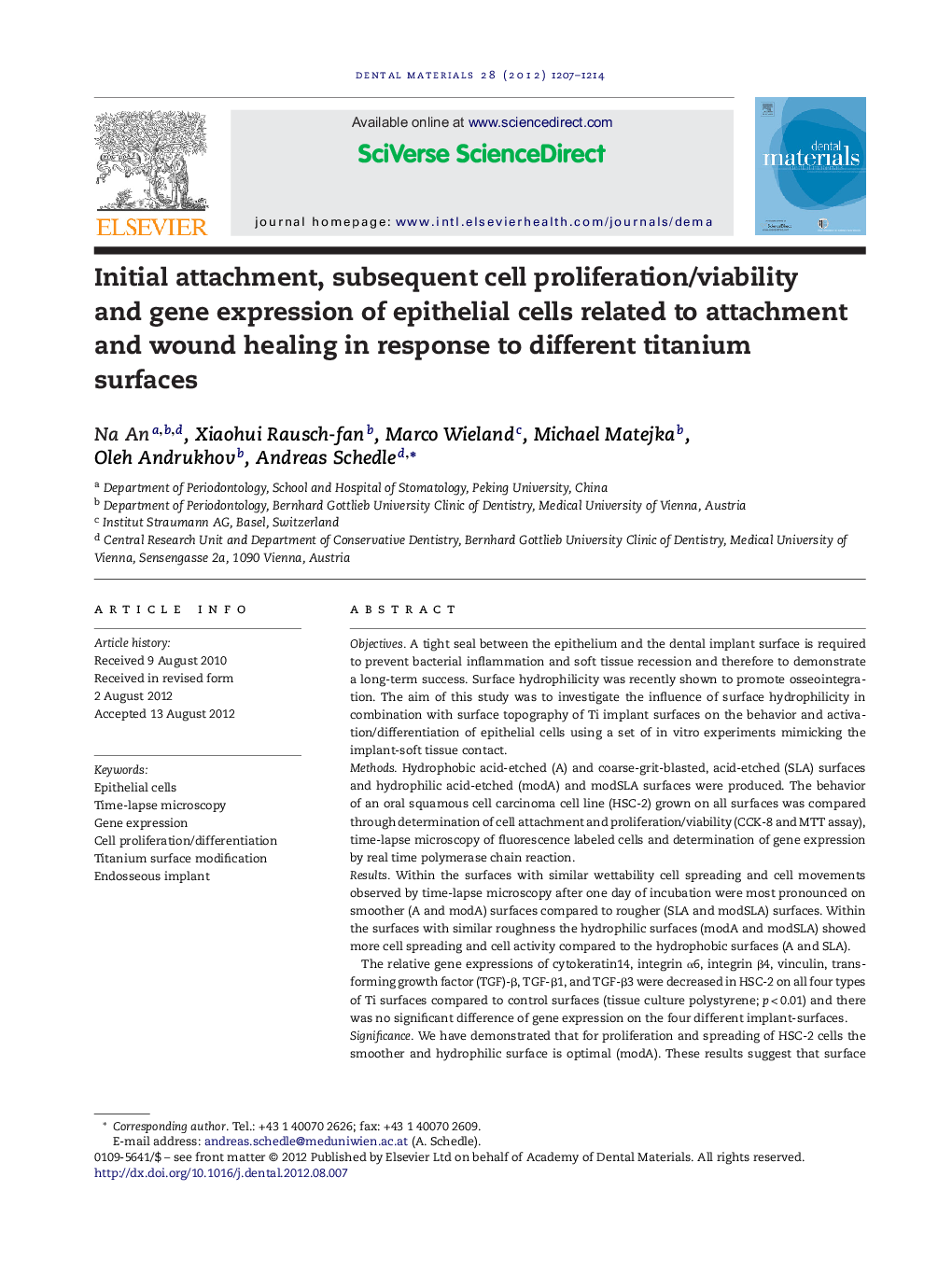| Article ID | Journal | Published Year | Pages | File Type |
|---|---|---|---|---|
| 1421422 | Dental Materials | 2012 | 8 Pages |
ObjectivesA tight seal between the epithelium and the dental implant surface is required to prevent bacterial inflammation and soft tissue recession and therefore to demonstrate a long-term success. Surface hydrophilicity was recently shown to promote osseointegration. The aim of this study was to investigate the influence of surface hydrophilicity in combination with surface topography of Ti implant surfaces on the behavior and activation/differentiation of epithelial cells using a set of in vitro experiments mimicking the implant-soft tissue contact.MethodsHydrophobic acid-etched (A) and coarse-grit-blasted, acid-etched (SLA) surfaces and hydrophilic acid-etched (modA) and modSLA surfaces were produced. The behavior of an oral squamous cell carcinoma cell line (HSC-2) grown on all surfaces was compared through determination of cell attachment and proliferation/viability (CCK-8 and MTT assay), time-lapse microscopy of fluorescence labeled cells and determination of gene expression by real time polymerase chain reaction.ResultsWithin the surfaces with similar wettability cell spreading and cell movements observed by time-lapse microscopy after one day of incubation were most pronounced on smoother (A and modA) surfaces compared to rougher (SLA and modSLA) surfaces. Within the surfaces with similar roughness the hydrophilic surfaces (modA and modSLA) showed more cell spreading and cell activity compared to the hydrophobic surfaces (A and SLA).The relative gene expressions of cytokeratin14, integrin α6, integrin β4, vinculin, transforming growth factor (TGF)-β, TGF-β1, and TGF-β3 were decreased in HSC-2 on all four types of Ti surfaces compared to control surfaces (tissue culture polystyrene; p < 0.01) and there was no significant difference of gene expression on the four different implant-surfaces.SignificanceWe have demonstrated that for proliferation and spreading of HSC-2 cells the smoother and hydrophilic surface is optimal (modA). These results suggest that surface hydrophilicity might positively influence the epithelial seal around dental implants. All tested titanium surfaces downregulate cell attachment, cell proliferation, expression of adhesion promoters, and cytokines involved in wound healing in HSC-2 cells compared to control surfaces.
